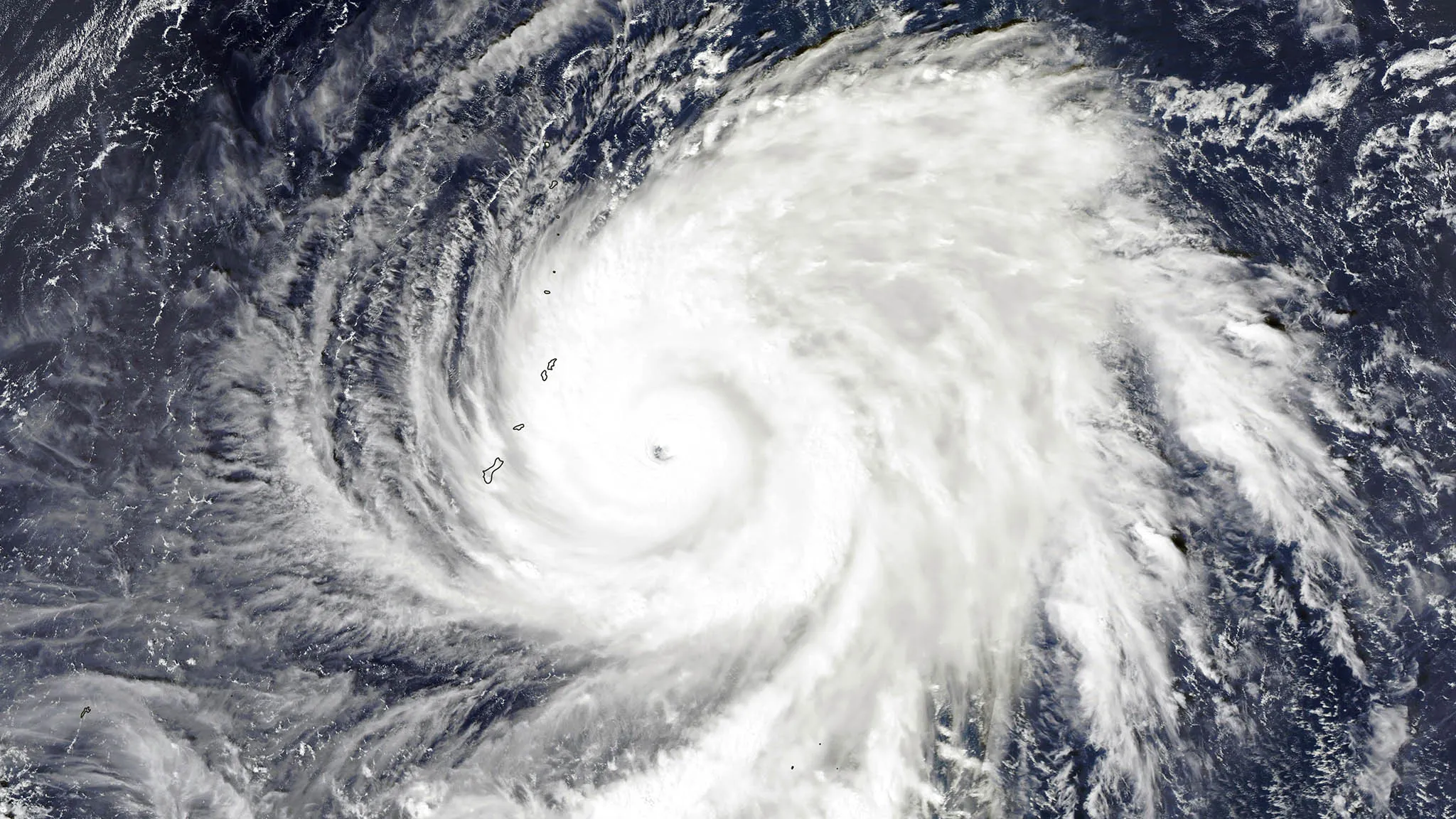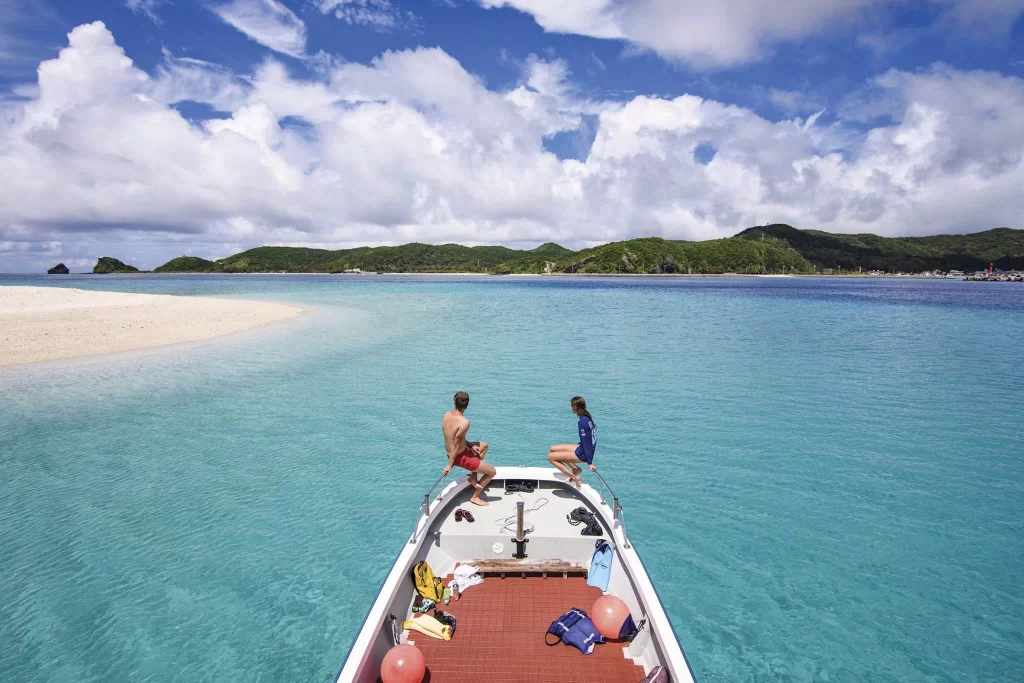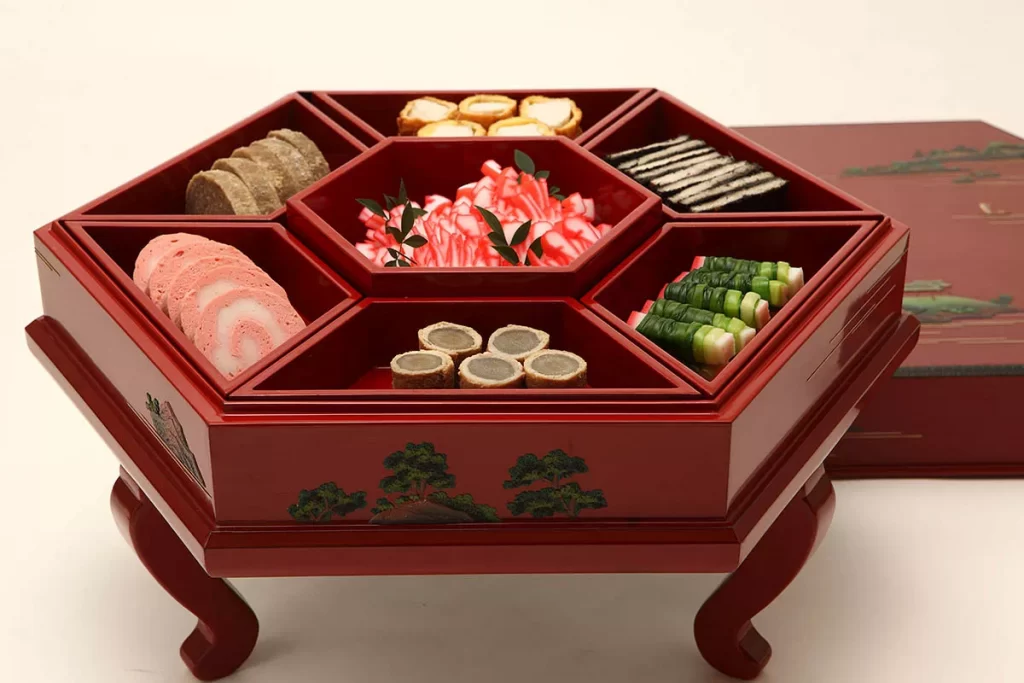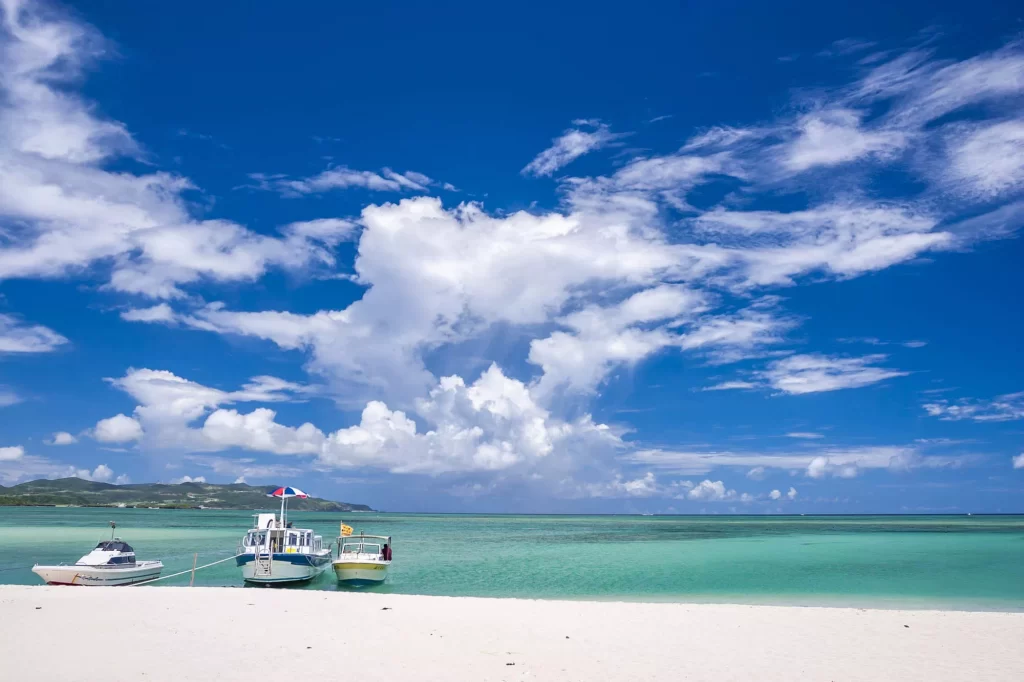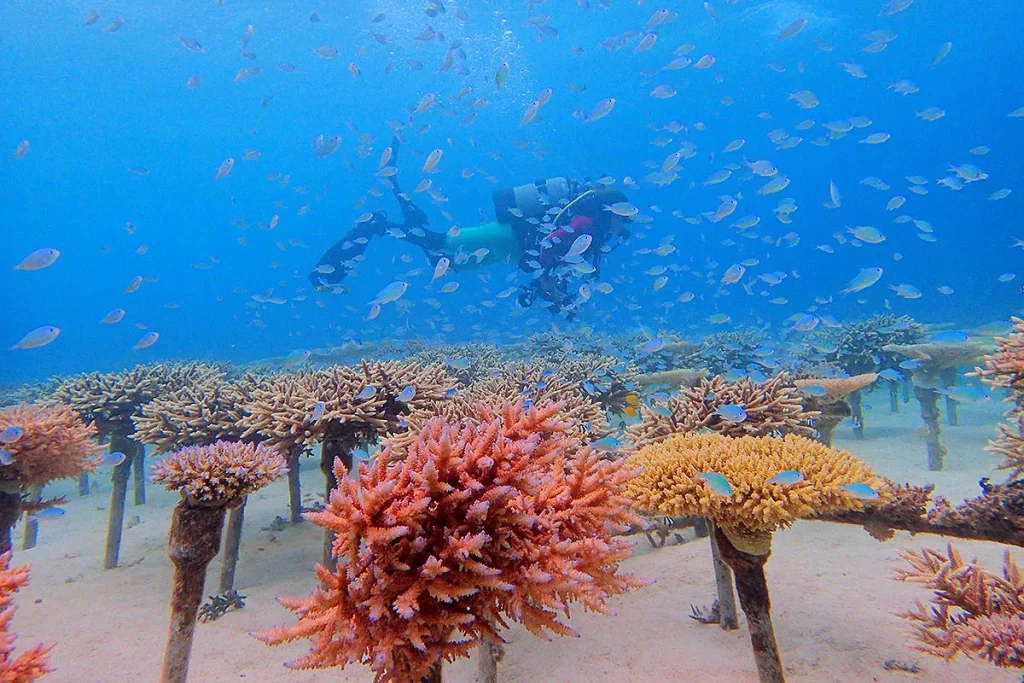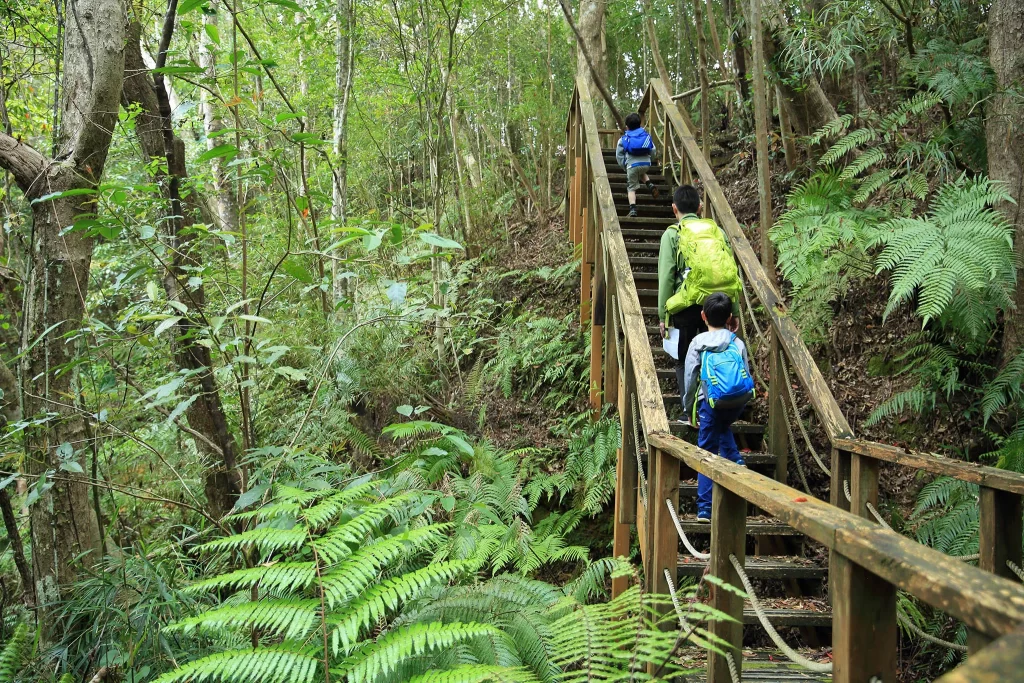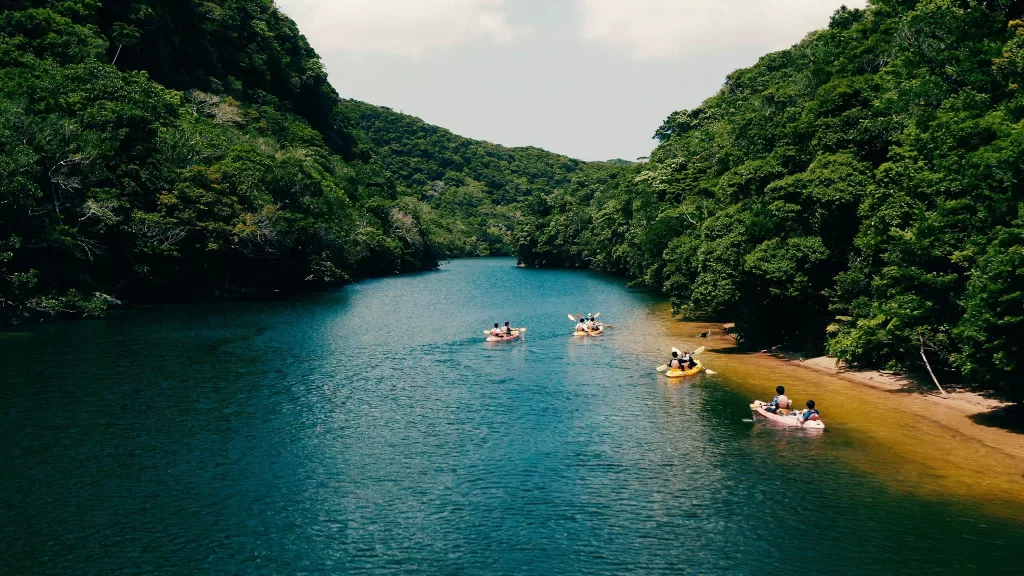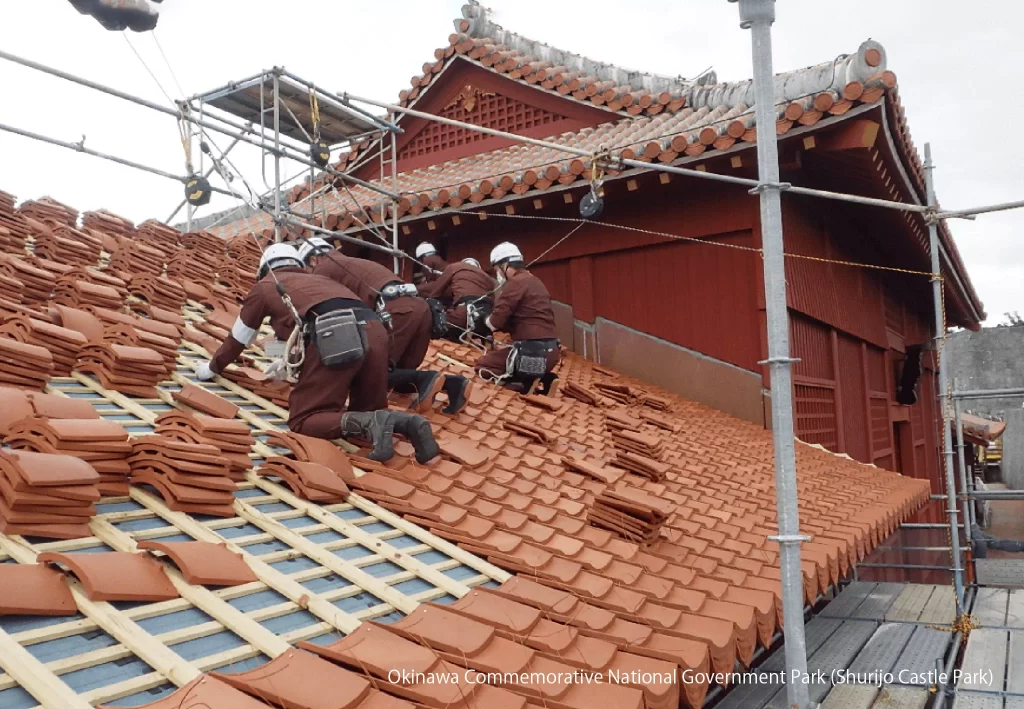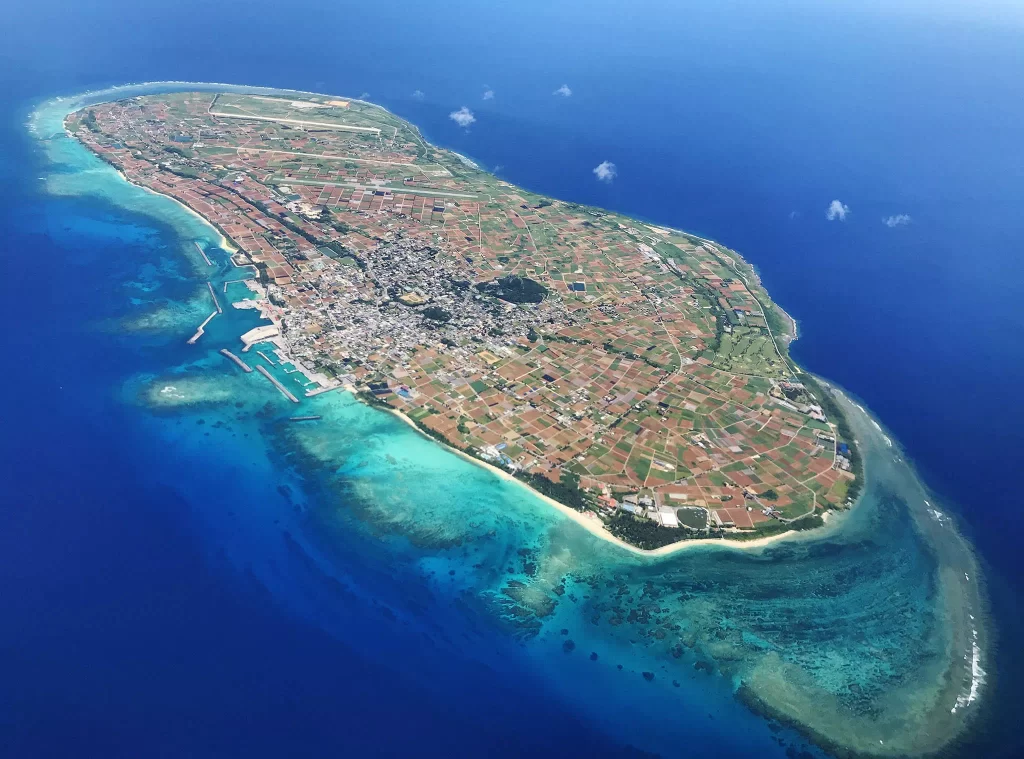Typhoon Precautions in Okinawa
What you need to know to enjoy safe travels in Okinawa during a typhoon
As a chain of islands, Okinawa is a region very susceptible to typhoons. Learn what to be aware of and what precautions to take when a typhoon approaches to ensure that you have a safe trip.
A typhoon is a tropical cyclone that occurs in the northwestern part of the Pacific Ocean characterized by strong winds, large waves, and heavy rain. Typhoons mainly affect Okinawa from June to September. Be sure to monitor the weather both before and during your trip.
Wind Forecast
*source: windy.com
Staying Safe
- Typhoons can cause high tides and large waves, so do not go near beaches or into the sea.
- Rain and wind intensity can change rapidly as the typhoon passes through. Refrain from going outside for nonessential reasons until the storm warning is lifted, even if conditions appear to be easing.
- Be sure to always check the latest information. Alerts and emergency warnings may be announced depending on conditions.
-
Make use of the following resources to stay safe and keep informed:
Check alerts and warnings at the Okinawa disaster prevention information portal.
Check the latest weather map at the Japan Meteorological Agency.
Contact the OKINAWA Multilingual Contact Center for multilingual support.
Download the xSafety tips for travelers app while traveling Japan.
Transportation
Strong winds, heavy rain, and powerful waves can affect transportation. Flights and ship services to and from Okinawa may be cancelled during a typhoon. Bus and monorail services may be suspended, and road conditions may worsen, making taxis or driving dangerous.
Flight Routes
- Visit the corresponding websites, information counters, or social media accounts for your airline to confirm flight status. View airline listings here.
Ships
- Ship services are affected by typhoons for a longer time than flight service. Plan ahead for potential cancellations by preparing alternate travel plans.
- Many companies that operate ships only provide support in Japanese. If you are having trouble communicating, get in touch with the OKINAWA Multilingual Contact Center.
Buses and Monorail
- To check whether public transportation is operating, ask at your accommodation or check with the OKINAWA Multilingual Contact Center.
Cars and Taxis
- Strong winds and rain can make road conditions unsafe, so please refrain from driving or using taxis.
- If you must drive, do so carefully at a low speed.
- Power outages may cause traffic signals to stop working. Be especially careful at intersections.
- Bridges and highways may become inaccessible. Be sure to arrive at your accommodation early before the typhoon hits.
Accommodations
- Policies regarding cancellation fees in the event of a typhoon differ depending on the accommodation. Contact your accommodation directly for details.
- If your return flight is canceled, be sure to make lodging arrangements quickly.
Sightseeing
- For your safety, please refrain from sightseeing during a typhoon.
- Public transportation service interruptions may make travel to or from sightseeing destinations difficult and dangerous.
- Some sightseeing and tourist facilities may close during a typhoon. Check their websites for announcements.
- Strong winds and waves persist for some time after a typhoon has passed, so please refrain from marine activities.
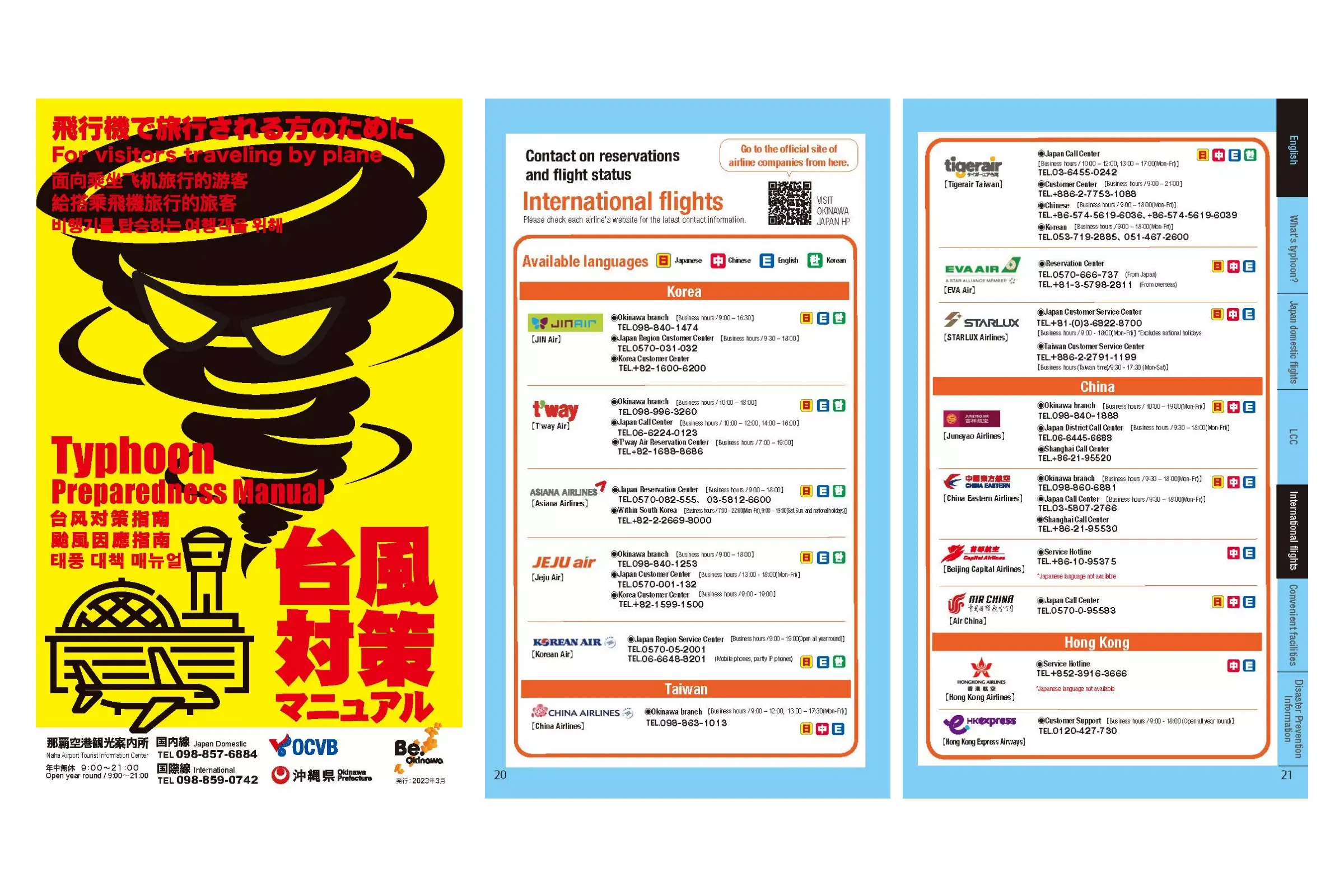
- For more information, consult the OKINAWA Travel Brochures: Typhoon Preparedness Manual.















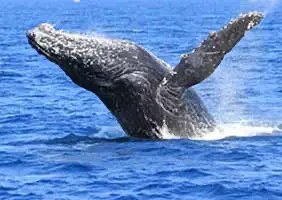


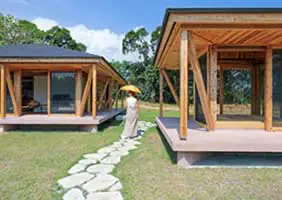
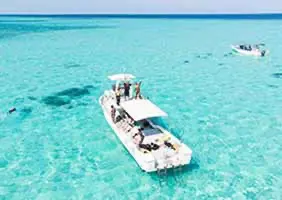
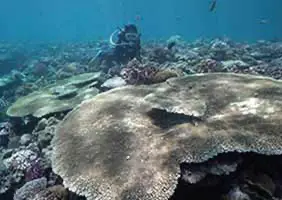








 Facebook
Facebook Twitter
Twitter Copy URL
Copy URL


